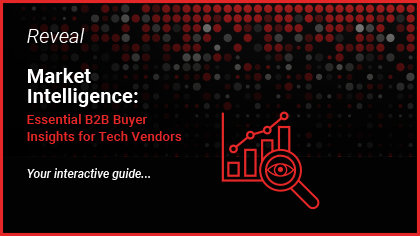While the term Account-Based Marketing (ABM) may sound like a buzzword, the concept of prioritizing high-value accounts has long been practiced by successful sales teams. These teams have always recognized the importance of organizing and prioritizing accounts based on factors such as fit, value, and potential to close deals.
What has changed in recent years, however, is the expanding role of marketing in supporting and enhancing the account-focused sales approach. The emergence of ABM has empowered marketing to work hand in hand with sales, jointly identifying and engaging key decision-makers and stakeholders within target accounts. This collaborative effort creates a more personalized and impactful customer experience, resulting in increased revenue, customer acquisition, and customer retention.
At its core, ABM revolves around targeting and prioritizing accounts and customers that offer the greatest opportunities for your business. Thanks to advancements in technology and data analytics, implementing ABM at scale with precision has become easier than ever before.
In this blog, we’ll share strategies to help you leverage ABM effectively and accelerate growth for your B2B sales.
- What is ABM
- Why is ABM important
- How ABM works
- The different types of ABM
- How to establish your ABM strategy
Reading time: 12 minutes
What is Account-Based Marketing?
ABM is a strategic marketing approach that allows businesses to focus their efforts on targeting and engaging high-value accounts and customers based on their fit, value, and potential to close. By personalizing marketing efforts and building relationships with key decision-makers and stakeholders within these accounts, businesses can improve their targeting, increase engagement, and drive revenue growth.
Why is ABM important?
ABM is vital for B2B companies aiming to expand and achieve rapid growth. By focusing on high-value accounts, ABM empowers companies to personalize marketing efforts, fostering deeper connections with potential customers. This tailored strategy not only drives enhanced conversion rates, shorter sales cycles, and increased revenue but also significantly impacts deal sizes. In fact, according to our first-party ABM research report, almost two-thirds (64%) of B2B marketers reported that the ROI from ABM strategies is higher compared to other marketing activities. This statistic underscores the immense value and effectiveness of ABM in driving tangible results for businesses.
Statistics reveal the compelling impact of ABM on revenue generation. In fact, 91% of companies utilizing ABM experience an upsurge in their average deal sizes. What’s even more notable is that 25% of those companies report a remarkable increase of over 50%.
The advantages of ABM are numerous:
- Increased alignment and collaboration: ABM promotes alignment and collaboration between sales and marketing teams, resulting in more cohesive campaigns and shared objectives
- Enhanced customer engagement: Tailoring messages and experiences to individual accounts enables companies to nurture long-term relationships and drive customer satisfaction
- Strategic resource allocation: ABM’s emphasis on high-value accounts with substantial ROI potential allows for optimized resource allocation, filtering out unqualified prospects early in the sales process
- Sustainable growth strategies: Engaging with key accounts positions businesses as industry thought leaders, supporting sustainable growth by establishing trust and industry recognition
- Promotion of collaboration: ABM fosters client relationships and encourages internal collaboration, leading to improved communication, more effective campaigns, and shared business successes
By integrating ABM into their strategies, companies can not only enhance revenue and forge lasting relationships but also establish a solid foundation for sustainable success in their respective markets.
How ABM works
ABM is a strategic B2B marketing approach that focuses on individual accounts rather than casting a wide net to a general audience. Unlike traditional marketing methods that aim to appeal to a broad audience, ABM targets high-value accounts as individual markets.
The fundamental distinctions between ABM and traditional marketing lie in their approach:
- Targeting individual accounts vs broad audiences: ABM involves a collaborative effort between marketing and sales teams to pinpoint and prioritize strategic accounts with the highest revenue potential. This collaborative approach ensures that outbound marketing initiatives are meticulously customized and tailored to these target accounts. In contrast, traditional marketing strategies target broader audiences, segments, and personas across numerous accounts.
- Personalized marketing for key accounts: ABM’s focus on a select number of high-value accounts enables highly targeted, personalized, and relevant messaging and content for each account. This results in a tailored customer experience across all touchpoints throughout the buyer’s journey. Conversely, traditional marketing employs more generalized messaging dispersed across all accounts.
- Strategic approach to generating new opportunities: By aligning sales and marketing efforts to penetrate strategic accounts, ABM facilitates the creation of new opportunities and accelerates deal closure. The emphasis shifts from broad lead generation to targeted opportunity generation. Rather than waiting for inbound leads, ABM embraces a coordinated outbound approach.
In essence, ABM brings sales and marketing with account intelligence to orchestrate customized campaigns focused on converting high-value accounts. This strategic, personalized methodology not only leads to higher win rates but also cultivates larger deals, propelling businesses towards their revenue objectives.
The different types of ABM
When it comes to your strategy, there are three main types of Account-Based Marketing to consider:
- One-to-one – Also known as Strategic ABM, in this tier, marketing works directly with the customer account teams to create highly personalized marketing programs for ‘markets of one’, otherwise known as micro-campaigns. The resources and budgets needed for 1-1 account marketing mean typically only the highest value accounts are in scope where the opportunity value must be large enough to warrant the white glove experience – ideally six figures or over. As an example, a typical one-to-one campaign may target around 5 to 10 of your key accounts.
- One-to-few – The second tier can also be referred to as ABM Lite. Depending on the number of accounts in focus, this approach may use digital marketing techniques but more often than not, it’s limited to 10s rather than hundreds of accounts which share similar attributes based on segmentation criteria such as industry or business challenge. The key is once again to target them with highly personalized and relevant content, including personalized messaging, that speaks directly to the audience.
- One-to-many – Also known as programmatic ABM, one-to-many, as the name suggests, focuses on a large number of named accounts delivering personalized content at scale. More often than not, this approach to ABM relies on specific tech to aid delivery.
Choosing the right approach is the most important step, so it’s vital to analyze the types of accounts you have in order to realize the best-fit approach. 35% of companies apply more than one strategy to ensure that their top accounts receive optimum personalization, while a broader campaign is used to reach other customers.
How to establish a robust ABM strategy: Best practices for success
A successful Account-Based Marketing strategy requires careful planning and execution across several key stages:
1. Identify your Ideal Customer Profile (ICP)
Identifying your Ideal Customer Profile (ICP) is essential for creating a detailed picture of your target accounts. Your ICP should include:
- Industry
- Size
- Revenue
- Pain points
- Buying committee
- Buying behavior
A well-defined ICP helps you understand which accounts are most likely to generate the highest return on investment (ROI) for your business.
2. Identify high-value target accounts
After establishing your ICP, the next crucial step is to identify target accounts that align with your ICP and have a high lifetime value. This involves creating a comprehensive target account list that encompasses companies meeting your ICP criteria and possessing significant revenue potential. In this process, predictive lead scoring, and technographics tools can be useful in aiding identification. With these tools, businesses can efficiently identify and prioritize target accounts, enabling them to effectively allocate resources towards engaging and closing deals with high-value accounts.
3. Conduct account research and mapping
Conduct in-depth research on your target accounts to understand their business objectives, challenges, and key stakeholders. While sales teams may have a general idea of which accounts to pursue, the process should be data-driven and led by marketing. This involves researching and analyzing the accounts that fit your ICP, identifying the key decision-makers and influencers, and mapping out their organizational structure.
This stage is critical to understanding the account’s challenges, goals, and buying cycle. By incorporating intent data, businesses can gain a better understanding of which accounts are actively in the market for their products or services and prioritize their outreach efforts based on the buying signals they are seeing accordingly. Develop rich account and contact profiles in your CRM, allowing you to tailor messaging and campaigns to resonate with each account.
4. Foster seamless collaboration between sales and marketing
Aligning marketing and sales is a vital component of a successful ABM strategy. At the core of ABM lies the need for sales and marketing teams to collaborate and combine their resources, including knowledge, data, ideas, talent, and budget.
Collaborative efforts between these teams ensure a cohesive approach and maximize the effectiveness of your campaigns. This involves regular communication, setting shared goals, and establishing a feedback loop to exchange insights and optimize strategies. By aligning marketing and sales, you can enhance targeting, messaging, and overall account engagement, leading to increased revenue generation and business growth.
5. Account prioritization and entitlements
Account prioritization and entitlements is the process of ranking accounts based on their potential to generate revenue and their strategic importance to your business. By ranking target accounts based on their fit, value, and potential to close, you can focus your resources and efforts on the most valuable accounts, maximizing ROI.
6. Create personalized content
Creating personalized content is crucial for increasing engagement and conversion rates with your target accounts. To effectively engage your audience, develop messaging that directly addresses their unique needs, challenges, and interests. Your targeted content should speak directly to each account’s needs, whether by customizing existing content or creating new pieces. Gather feedback and insights from your target accounts to fine-tune your content strategy for maximum effectiveness.
7. Select the most effective channels to engage with decision-makers
Select the most effective channels to engage with decision-makers. Analyzing account data and intent can provide insights into preferred channels, such as digital advertising, direct mail, phone, or social media. By selecting appropriate channels and ensuring a consistent brand experience, businesses can enhance the impact of ABM campaigns and drive better outcomes. Adapting outreach strategies to preferred channels enhances engagement and fosters successful interactions.
8. Measure and optimize your ABM campaigns
Measure and optimize your campaigns by setting up ABM-specific metrics to understand progress and the impact of your efforts. Regularly analyze the results and optimize campaigns based on these metrics. A/B test messaging, tactics, and experiment with different channels or content formats. Measuring and analyzing ABM efforts empower data-driven decisions that enhance engagement and generate revenue.
9. Scaling ABM
Scaling ABM is an important consideration for organizations that want to expand their ABM efforts beyond a small pilot program or initial test. While scaling ABM can be challenging, it’s also an opportunity to extend the benefits of this approach to more accounts and drive even greater revenue growth.
Best practices for scaling ABM:
There are several best practices that can help organizations scale their ABM efforts effectively. These include identifying high-value accounts that are a good fit for ABM, creating a scalable ABM framework that can be replicated across different accounts, and leveraging data and analytics to improve targeting and personalize messaging. It’s also important to establish clear processes and workflows to ensure that ABM efforts are coordinated and aligned across different teams and functions.
Incorporating technology for ABM success:
Technology can play a critical role in scaling ABM by automating repetitive tasks, providing data and insights to inform targeting and messaging, and enabling more personalized and targeted communications with target accounts. Tools like account-based advertising platforms, predictive analytics and marketing automation software can all help to streamline and enhance ABM efforts. However, it’s important to choose technology that aligns with your overall ABM strategy and goals, and to invest in the necessary training and support to ensure that your teams can use these tools effectively.
Understanding the challenges of scaling ABM:
Scaling ABM can present several challenges, including maintaining a consistent level of personalization and engagement across a large number of accounts, coordinating efforts across different teams and functions, and ensuring that ABM efforts are aligned with broader marketing and sales strategies. To overcome these challenges, it’s important to have a clear plan for scaling ABM, establish clear roles and responsibilities for different teams, and communicate regularly to ensure that everyone is on the same page.
Conclusion
Account-Based Marketing is a powerful strategy that can significantly enhance your digital marketing efforts. While it may require some time and effort to perfect your approach, the benefits are well worth it. By implementing ABM, your company can drive revenue growth, scale your business, and foster stronger relationships with your most valuable accounts. To create a successful ABM program that delivers tangible business results, it’s crucial to follow best practices outlined in this guide.
Inbox Insight’s tailored Account-Based Marketing services are designed to boost your growth and propel your business forward. Our customized strategies, combined with our data-driven approach, enable you to reach the right people and generate real results. Don’t miss out on valuable opportunities to accelerate your B2B sales.
Did this article provide valuable insights? For more Account-Based Marketing content and best practices from our team of digital marketing specialists, be sure to explore our collection of articles.







